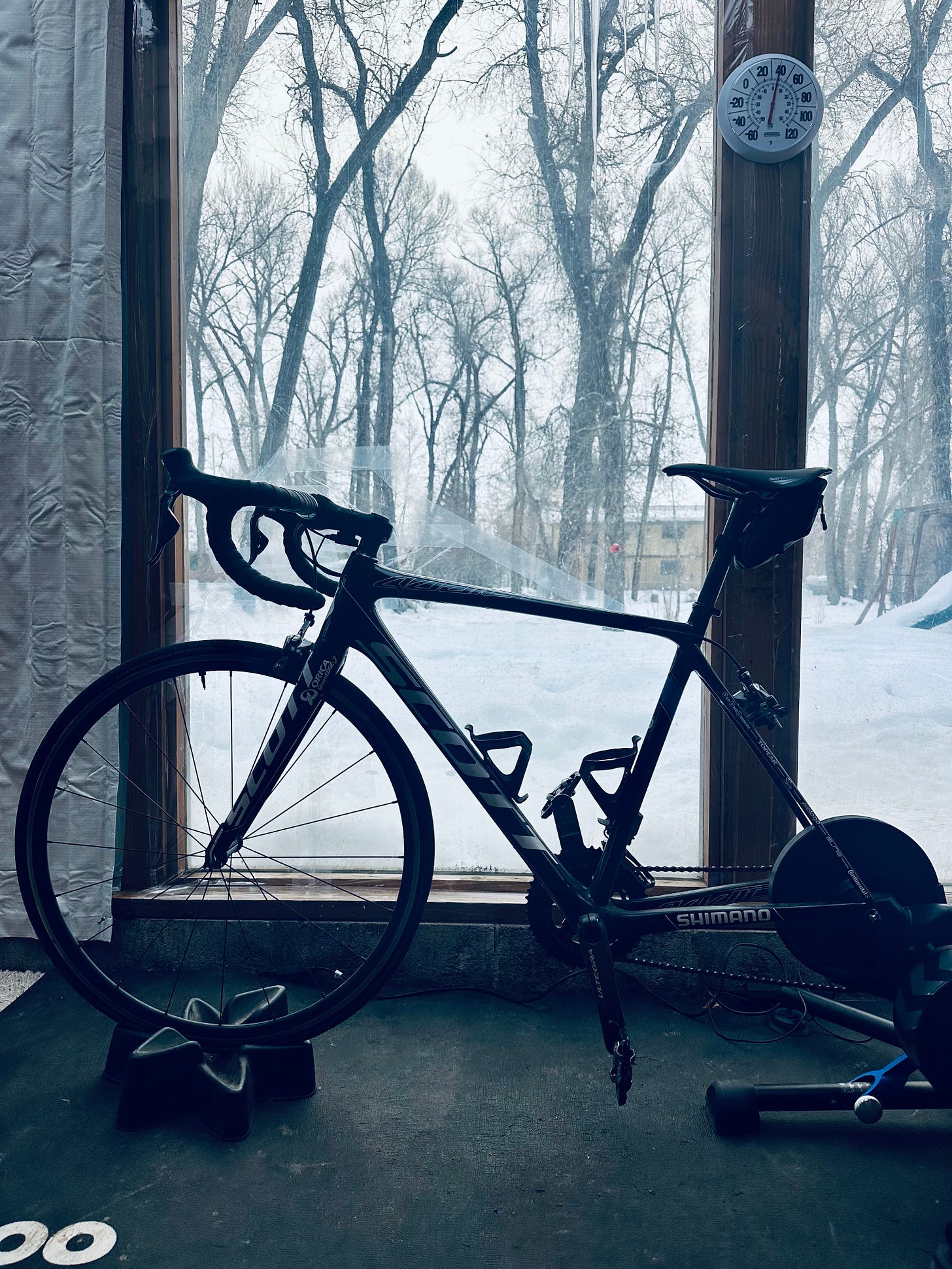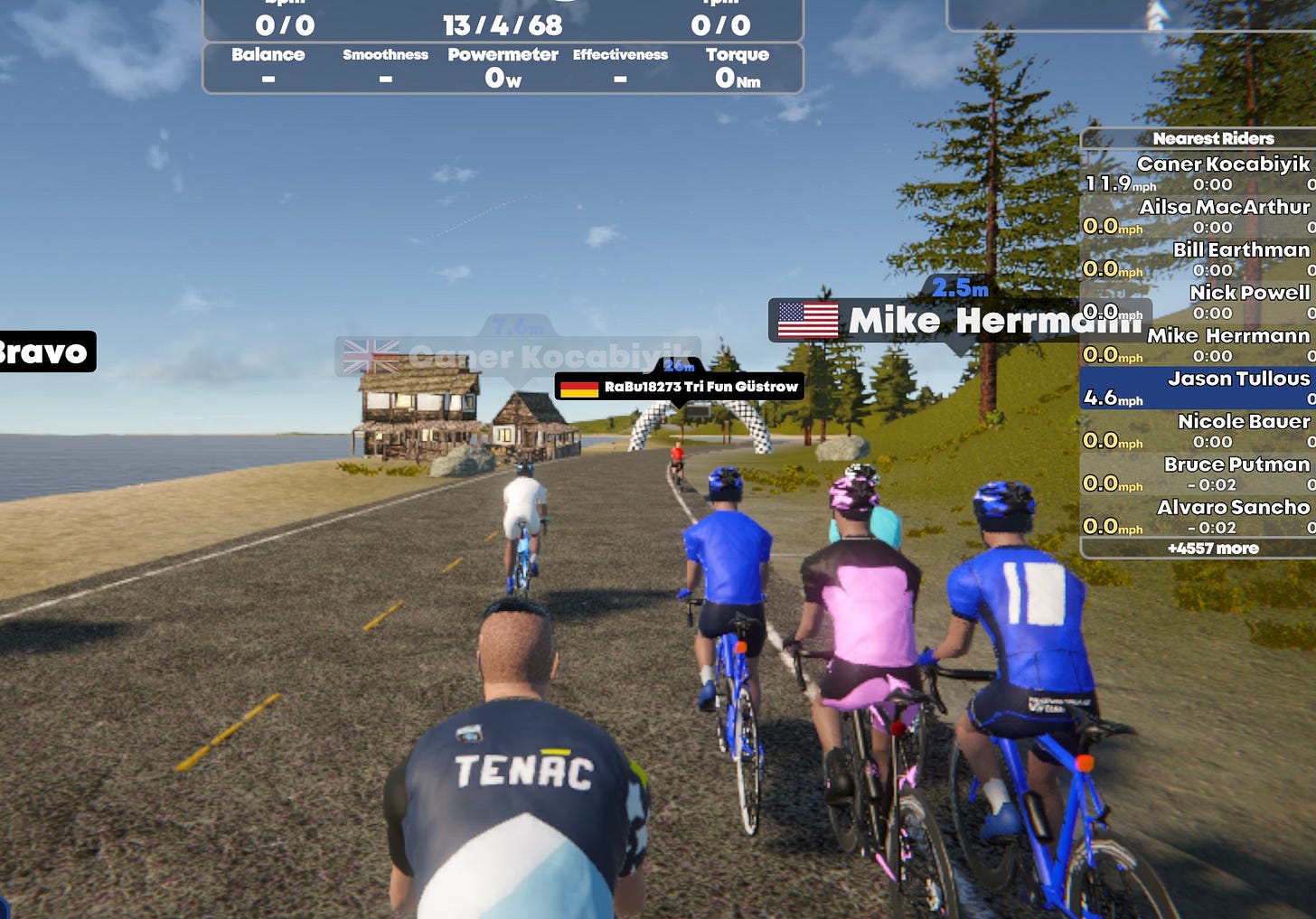Mark your calendars! Join Tenac and Bicycle Haus on Monday, February 17th, starting at 3:00 PM, for a game-changing sweat testing event with Precision Fuel & Hydration.
Why Sweat Testing?
Every athlete is unique, and understanding your sweat rate and sodium loss is key to optimizing your hydration and fueling strategy. I did this test two years ago and found my hourly sodium loss was specifically 1003mg. Now, I know exactly how much sodium to load into my bottles. The test is easy as you just sit for a few minutes while they get a sample of sweat. See this short video for more information:
These personalized insights to help you:
Perform better on the bike and in training.
Avoid dehydration and cramps.
Build a hydration plan tailored to YOUR needs.
Price: $200
Spots are limited, so secure your place with an email to johnbenson@gotenac.com
Location: Bicycle Haus, Scottsdale, Arizona
Trainingpeaks Virtual is live!
It’s been a harsh winter here in Gunnison, Colorado which I have done well to incorporate nordic skiing. However, now is the time for me to get back to the bike and unfortunately, it’s going to include many indoor workouts. So let me introduce Trainingpeaks Virtual.
TrainingPeaks Virtual is the latest innovation from TrainingPeaks, designed to bring seamless communication and enhanced training experiences to athletes and coaches, all in a virtual environment. The app integrates advanced analytics, real-time feedback, and interactive coaching features, enabling personalized training plans and data-driven performance insights.
Right now till April, Trainingpeaks Virtual is FREE to anyone with an account. We also have a team within the App and you can fly your Tenac colors virtually. Simply, send in a request through the app to be a part of the team and you’ll be able to wear a Tenac kit.
Your workouts will sync to the App and auto upload Trainingpeaks.
There are races and other group activities with in the app community.
HRV, Sleep, and Alcohol
Since the Covid pandemic, my alcohol consumption has gradually become a daily habit. It’s not something I consider a problem, but around 4:30 PM, I find myself craving a beer. My consumption is light—typically one drink, occasionally two, each evening. I’ve quit drinking a few times, lasting anywhere from a few weeks to a couple of months, but I always seem to find my way back to a hazy IPA or two in the evenings.
After Thanksgiving, I decided to take a break from drinking. However, as holiday vacations often go, I found myself in Arizona, enjoying a couple of beers each night. Returning home after the holidays, I stepped on the scale and discovered I was 15 pounds over my race weight—the heaviest I’ve ever been.
Knowing that cutting out alcohol is a quick way to lose weight, I decided to stop drinking again. Now, three weeks in, I’ve already shed a few pounds and noticed a little extra cash in my wallet.
The Real Story: HRV and Alcohol
Along this journey, I’ve been tracking my Heart Rate Variability (HRV). According to HRV4Training, HRV is “a term that refers to ways to summarize in a number the variability between heartbeats.” Why does this matter? Because HRV is a practical, non-invasive way to measure the activity of your autonomic nervous system in response to stress.
Our bodies are constantly striving to maintain balance, or homeostasis. Heart rate, blood pressure, glucose levels, and hormones all adjust to the challenges we face. HRV gives us a measurable glimpse into how well our bodies are managing stress and recovery.
In essence, any stress—whether from training, work, home, or life—impacts HRV. By tracking it, you gain insights into how well your body is recovering day to day. Over the years, I’ve used HRV with several athletes to fine-tune their training.
Like any metric, HRV has its limitations. It’s not a perfect indicator of stress and recovery but, much like heart rate, it provides valuable patterns that can inform decisions.
Alcohol, Sleep, and Recovery
Alcohol doesn’t directly lower HRV, but it does impact sleep, which is our #1 recovery tool. Poor-quality sleep leads to subpar recovery, and in turn, your HRV decreases.
Looking back at my HRV scores, I averaged around 41 milliseconds between Thanksgiving and Christmas. When I started drinking again, my HRV quickly dropped to the low 30s. After New Year’s, when I stopped drinking, my HRV rebounded to the 40s, even reaching as high as 47 milliseconds.
In the past few weeks, I’ve been recording my highest HRV scores yet. I attribute this to two key factors:
Consistent Quality Sleep: Cutting out alcohol has allowed my body to recover more effectively.
Breathing Exercises: I’ve reintroduced morning breathing exercises, and they’ve had a noticeable impact on how I feel.
The Role of Breathing
For years, I’ve explored the art of breathing, experimenting with various techniques. One of my favorites is the Wim Hof Method, though it’s not the only effective approach. A key goal of many breathing practices is to shift your body into a parasympathetic state.
Throughout the day, we live predominantly in a sympathetic state—always “on,” stressed, and alert. By practicing intentional breathing, you can reset your body, promoting recovery and relaxation. Wim Hof breathing does this effectively, and I’ve been practicing it 4-5 times a week. It’s made a noticeable difference in my HRV scores and, more importantly, in how I feel day to day.
The Takeaway
Sleep is crucial, and recovery is essential for growth. Alcohol, while enjoyable, can disrupt your sleep and, by extension, your recovery. Knowing this, you can make informed decisions about your alcohol consumption.
Will I drink again in the future? Probably. But right now, feeling as good as I do day to day, I’m not eager to stray too far from this path.
Recovery starts with the basics: sleep, stress management, and balance. Use tools like HRV to guide your choices and prioritize your well-being. The results speak for themselves.







